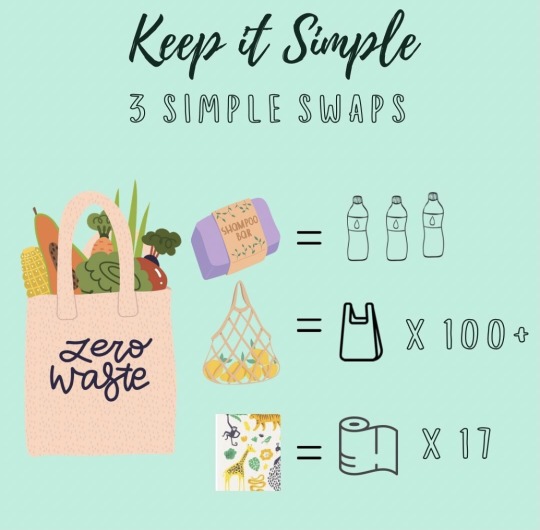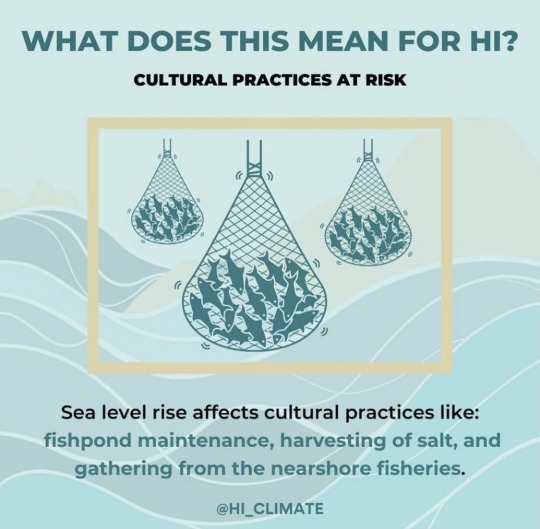#articlereflection
Explore tagged Tumblr posts
Text
Participation: Article Reflection
I enjoyed reading the article and I do believe that we have to inspire people by tapping into their personal motivations. It is kind of hard to care about a problem or a situation if you are not emotionally invested. Unless an individual is shown how they are personally effected by something like climate change, there would not be any progress on how we are going to solve this massive issue.

This visual is from Keep it Simple in Kaimuki. It is a zero waste store and it shows how many bottles or plastic bags you are eliminating by switching over to simple, sustainable products.

This one talks about climate change and the rise of sea levels. It shows which Hawaiian cultural practices are at risk if sea levels continue to rise.
0 notes
Text
REFLECTION: Installation Art
http://www.tate.org.uk/art/art-terms/i/installation-art
Installation based work is something I find myself attracted to because the focus is shifted from the story of the object to the experience of the viewer. Before having read into a concrete definition of the style, I would have considered myself to be an “installation artists” because of the temporary and interactive nature of my work. Although those elements are important in establishing a definition, the style is defined by “large-scale, mixed-media constructions, often designed for a specific place or for a temporary period of time.”
I think I am moving in the right direction towards working in this style, but there seems to be a fine line between interactive sculptural works and installations. As of now, my work is still closer to interactive sculptures, and although there is no problem with that, I want to be able to create spaces that are more universal for experiences rather than being a series of separate, individual pieces. The most difficult aspect to me is creating that universal experience or story without completely removing myself. This is a concern because although I want it to be relatable and understood/experienced by a wide audience, can you consider it art if the artist is detached completely?
Despite how I define myself, I was able to find that there was a reawakening of conceptual art in the 1980s that peaked interest in installation based works. The focus on concept combined with large scale environments is what draws me to the style. It gives viewers an opportunity to fully immerse themselves in the work, as if they are getting a sneak peek into the artist’s brain while owning an experience completely to themselves. It allows the artist to maintain their attachment to the work while letting the viewer create their own story.
0 notes
Text
REFLECTION: Minimalism
http://www.tate.org.uk/art/art-terms/m/minimalism
Although I have a basic understanding of what minimalism is, I wanted to set a baseline for the definition and to confirm that I understood the stylistic characteristics before moving forward. My understanding was, for the most part, correct, but I found out a handful of details that I did not realize were included in the definition of the style/movement. The following is a summary of my understanding of minimalism after reading this article.
The movement and style features geometric forms that are generally presented as sculptures or installations, but there are a handful of painters that embraced minimalist theories as well. Minimalism was a shift away from abstract expressionism and gestural art. It focuses on the simplification of form and concept to confront what is physically in front of viewers, the medium/material and the form itself.
This simplification and refocusing of thought on the object itself is an attempt to bring attention to the form and the space it embodies rather than the background of the artist. Because of the detachment from being representational, this movement was seen as “representing qualities [of] truth, order, simplicity, and harmony,” encouraging viewers to be conscious of the space the artwork is in and how it interacts with that space.
I am fascinated by this style because of the high levels of detachment and simplification. Personally, I believe that artwork is an embodiment of the artist’s background no matter the intention of detachment. Despite that, I find the style captivating because of the ability of the artists to manipulate space. It brings attention to the object itself and the physical experience in the space rather than holding a loaded message or story. The call to being present and the simplification of form are the main influences I take from this style.
0 notes
Text
REFLECTION: How Rebecca Louise Law Turns Decaying Flowers Into Beautiful Art
https://www.cnn.com/style/article/rebecca-louise-law-flowers/index.html
I found Law’s work a few months after my first installation with flowers. I was excited to see someone else working with flowers in a similar way, but also nervous that it would seem as though I was copying her. Although we both display the flowers hanging upside down, our theories and ideas about how the flower is used is different as well as the overall display of the work.
Law is approaching the material from a desire to showcase the three dimensionality of nature rather than being confined to a canvas (having had a background in classical painting). I find this interesting because she is then confined to a man-made space by only showing work in indoor spaces. As I read through the article, she mentions that this is intentional. “It’s about having a space to appreciate the natural beauty we’re given…a platform for showing what we already have.”
Her work mainly confronts the ideas of life and death, while also considering ecological footprints and consumerist trends. She does this by preserving and saving every flower she uses while also buying flora from the area with each new installation. It allows Law to create a bank of dry flowers to use in later installations. Her work becomes a representation of the area she is installing in and plays into the commercialization of nature.
Overall, I enjoy the conversation she brings up with the juxtapositions of life/death and nature/man-made. It’s something that I forget to consider sometimes even though flowers are generally used as a metaphor for life and death. Her work inspires me to consider how spaces are being filled and used.
0 notes
Text
REFLECTION: Concentrative Meditation Influences Creativity by Increasing Cognitive Flexibility
Before I give a brief summary and response, I want to define a few things:
Cognitive Flexibility: The ability to switch between patterns of thought and understanding. To go from one form of pattern association to another to be able to create new connections.
Mindfulness Meditation (MM): Practice of acknowledging thoughts as they pass and becoming aware of physical sensations and surroundings.
Concentrative Meditation (CM): Practice in which the focus is paced on a specific action or object. Distractions are redirected back to the single object/action. Many times the focus is placed on the breath and how it moves through the body.
Researchers tested the relationships between cognitive flexibility and meditation by doing a series of tests. In their study, two groups were used – one primarily trained in MM and the other in CM. Each participants in the groups were asked to take a test measuring their creativity and cognitive flexibility. They then completed a meditation session in their normal fashion; ending with the same test that was given previously. They found an increase in the cognitive flexibility after those who did the CM practice and little to no change after the MM practice. Although the difference is important, they are still in the process of performing tests for theories about the two meditation practices. I am more concerned with the overall results.
I found this interesting because it provided evidence for an idea I’ve had before about meditation and its effects on opening the boundaries of thought and critical thinking. There are still a lot of unknowns in their research, but it provides evidence that there is a connection between meditation and increasing the ability to think more creatively. I would take it a step further to say that meditation practices can help develop critical thinking skills because it teaches focus and openness of the mind. Of course, this would have to be tested more to prove its validity, but it confirms a thought I’ve had on the connection between meditation and creativity. Or rather, cognitive flexibility. I want to use this information to inform the way I think about meditation in both the spiritual and analytical forms when implementing its theories into my art practice.
0 notes